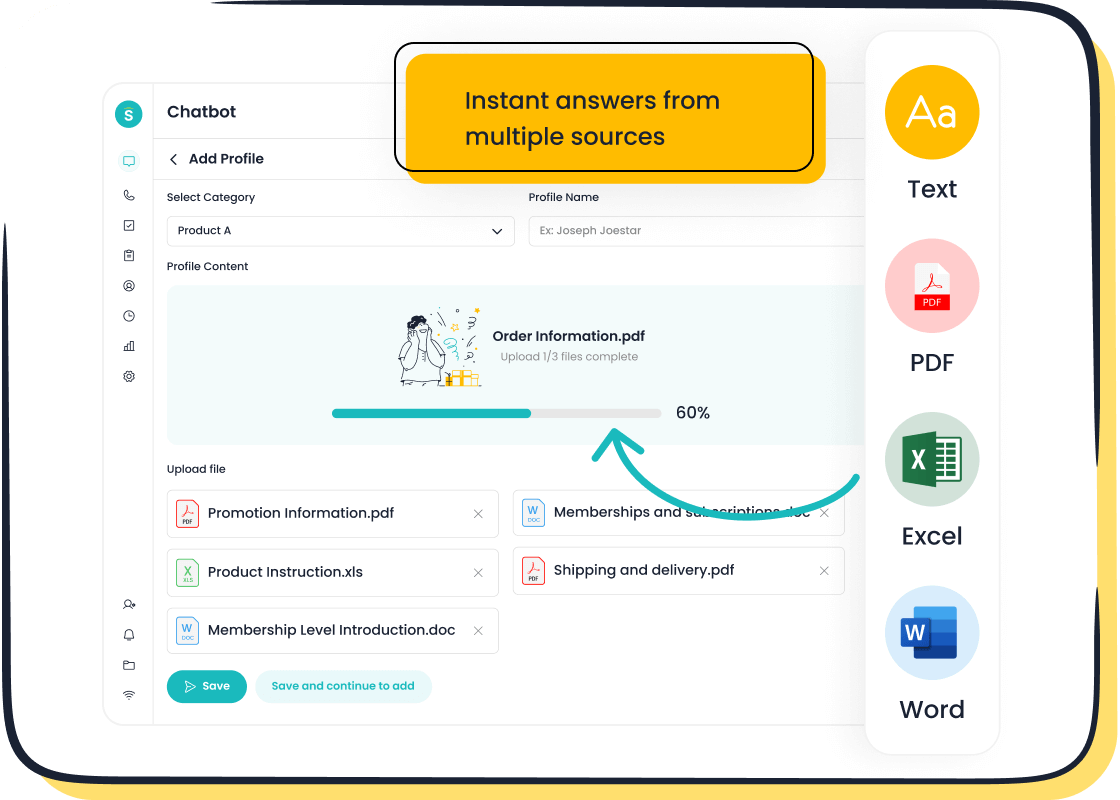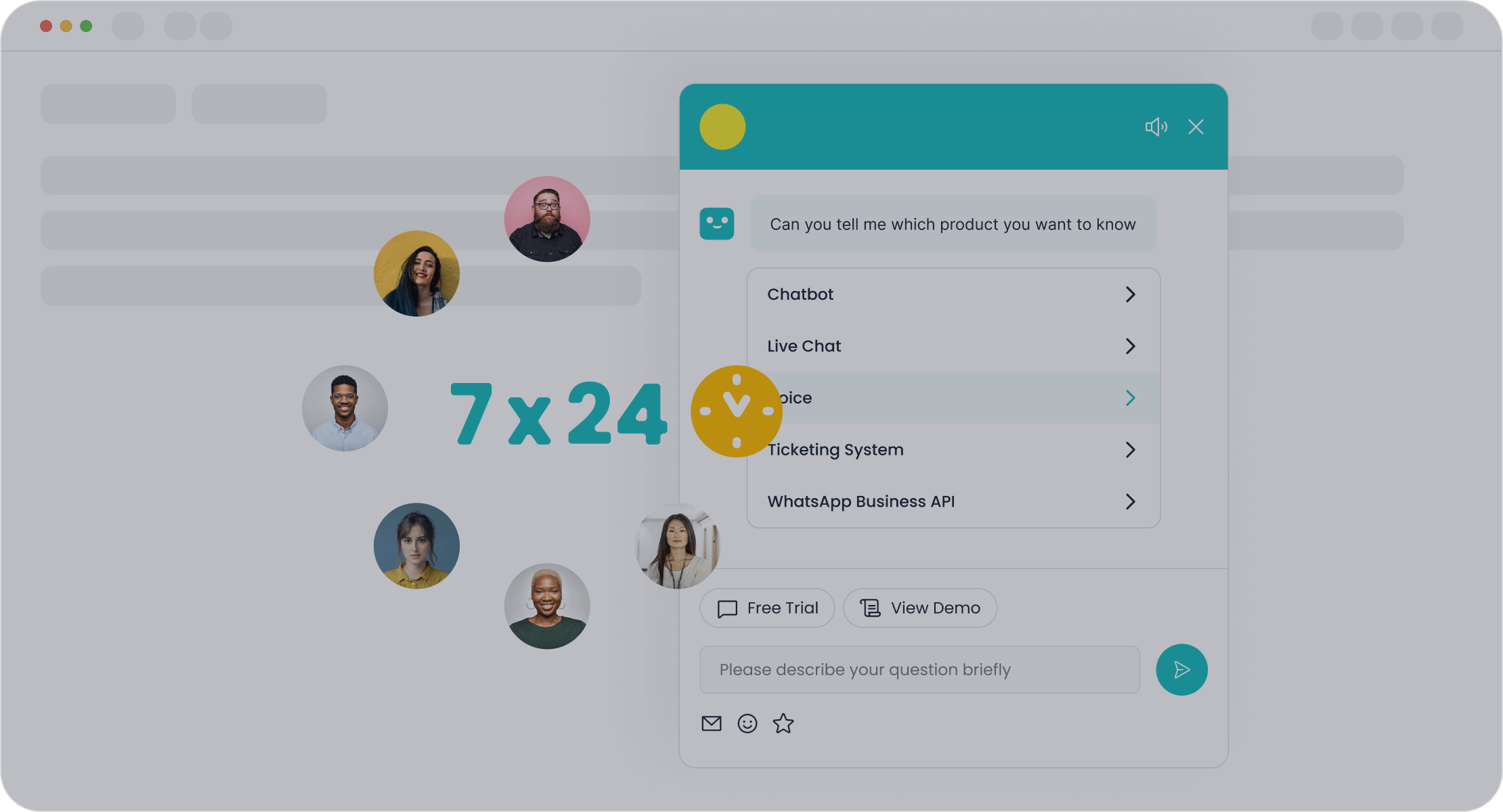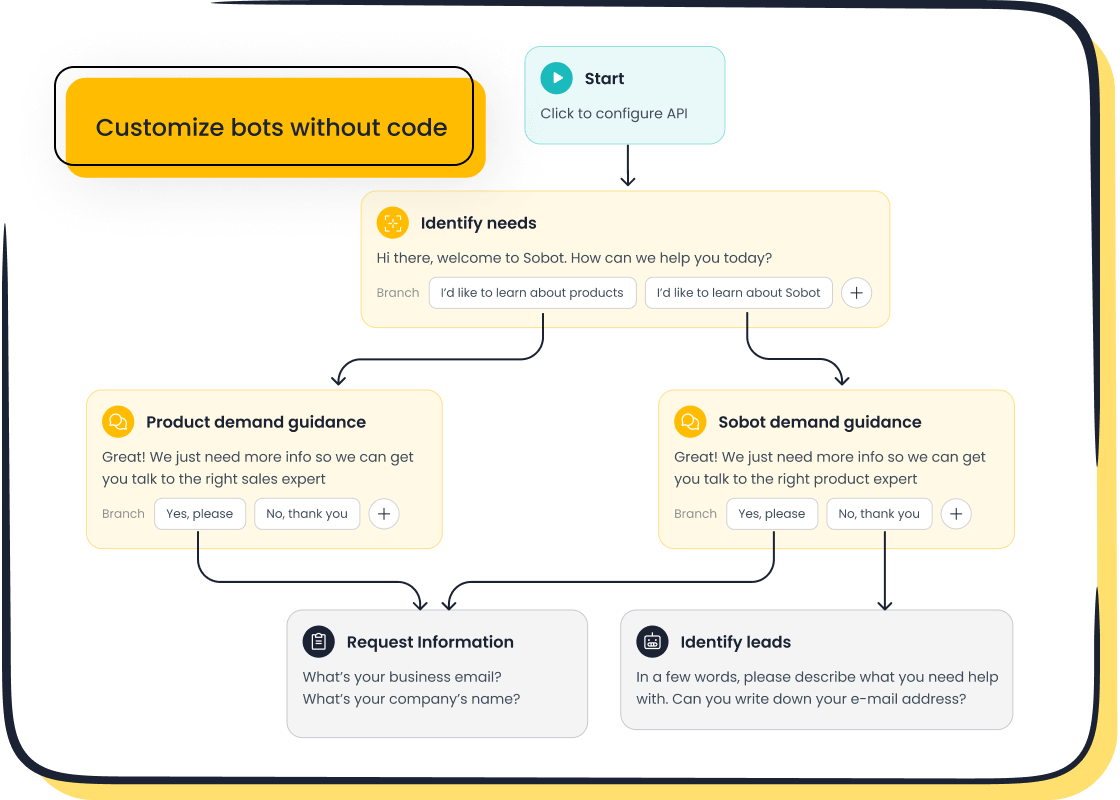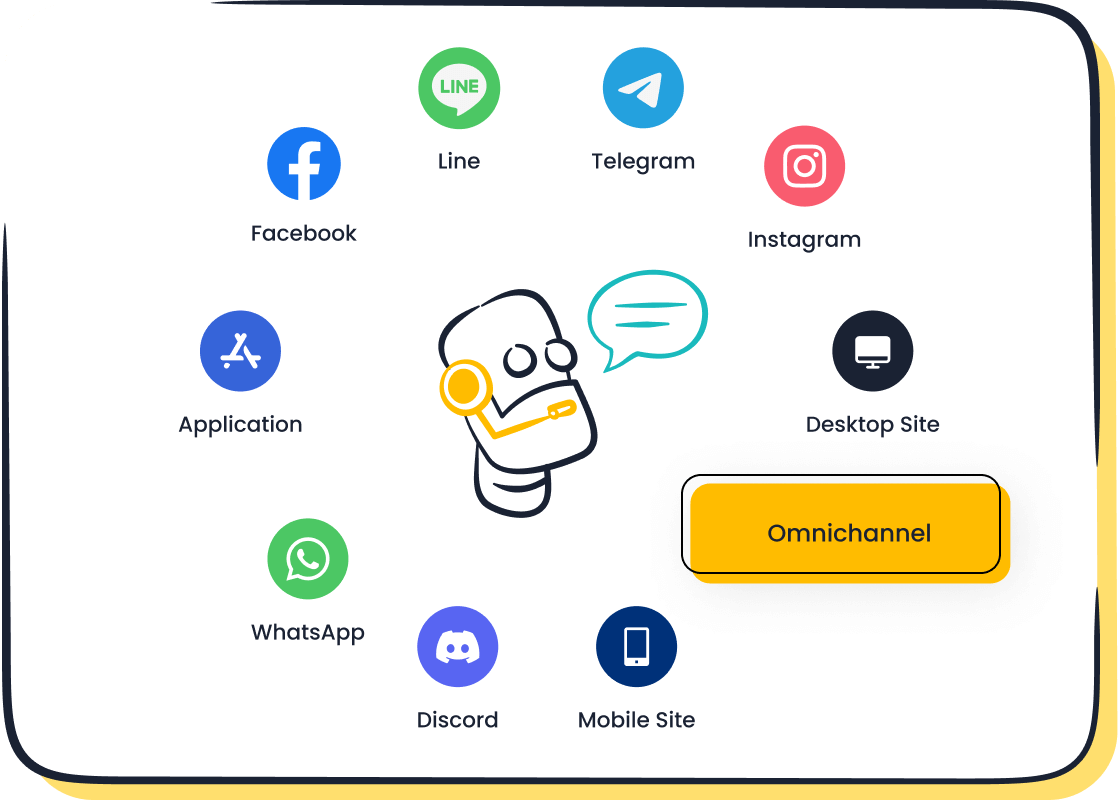How to Build an Internal Knowledge Base Chatbot

Imagine having a tool that answers your team’s questions instantly, reduces repetitive tasks, and boosts productivity. That’s exactly what an internal knowledge base chatbot does. It acts as a virtual assistant, providing employees with quick access to critical information, procedures, and best practices. This empowers your team to solve problems independently and work more efficiently.

The benefits are clear. Employees using chatbots complete tasks 25.1% faster and perform 40% better. Businesses also save up to 30% of the $1.3 trillion spent on customer service costs through automation. Tools like Sobot’s chatbot make this process even easier with features like 24/7 availability and seamless integration.
Building one involves setting goals, organizing your knowledge base, and choosing the right tools. With the right approach, you can transform how your team works.
Understanding Internal Knowledge Base Chatbots
What Is an Internal Knowledge Base Chatbot?
An internal knowledge base chatbot is a virtual assistant designed to help your team access information quickly and efficiently. It connects directly to your internal knowledge base, which stores essential documents, FAQs, and procedures. By using AI, these chatbots analyze user queries and provide accurate responses in real time. They adapt to user behavior and improve over time, making them smarter with every interaction.

Think of it as a bridge between your team and your knowledge management system. Instead of wasting time searching through files or asking colleagues, employees can simply ask the chatbot. For example, Sobot’s AI-powered chatbot integrates seamlessly with your knowledge base, offering 24/7 support and multilingual capabilities. This ensures your team gets the answers they need, no matter the time or language.
Benefits of an Internal Knowledge Base Chatbot
Enhancing internal communication
Chatbots streamline communication by providing instant answers to common questions. They reduce the need for back-and-forth emails or meetings. For instance, 62% of employees already rely on chatbots for HR-related tasks, improving communication flow across teams.
Reducing time spent searching for information
Employees spend an average of 1.8 hours daily searching for information. A knowledge base chatbot eliminates this inefficiency. It provides quick access to data, saving time and boosting productivity. Automation also reduces operational costs by up to 30%.
Boosting employee productivity
With faster access to information, employees complete tasks 25.1% faster and perform 40% better. This means your team can focus on high-value work instead of repetitive tasks. Sobot’s chatbot, for example, improves productivity by 70% through smart self-service and proactive assistance.
Applications of Knowledge Base Chatbots
IT support and troubleshooting
Knowledge base chatbots excel in IT support. They handle troubleshooting queries like password resets or software issues. Airbus’s chatbot, Bessie, manages 74% of IT-related questions, even after hours, ensuring uninterrupted support.
HR and administrative queries
From leave policies to payroll questions, chatbots simplify HR processes. They automate repetitive tasks, allowing HR teams to focus on strategic initiatives. For example, MSU Federal Credit Union’s chatbot automates 2,000 interactions monthly, improving efficiency.
Employee onboarding and training
Chatbots make onboarding smoother by guiding new hires through company policies and training materials. They provide instant answers to questions, reducing the learning curve. General Motors’ chatbot, Ev-e, conducted over 500,000 interviews, showcasing the potential for large-scale training programs.
Preparing to Build Your Internal Knowledge Base Chatbot
Setting Clear Goals and Objectives
Identifying key use cases
Before diving into the technical aspects, you need to define why you're building an internal knowledge base chatbot. Start by identifying the key use cases. For example, do you want to streamline IT support, simplify HR queries, or enhance employee onboarding? Each use case will shape how your chatbot interacts with users and what kind of knowledge base content it needs to access.
Think about your team's pain points. Are employees spending too much time searching for information? Or are repetitive questions bogging down your HR team? Pinpointing these challenges will help you focus on the most impactful solutions.
Defining success metrics
Once you’ve identified your use cases, it’s time to define success metrics. These metrics will help you measure the chatbot’s effectiveness and ensure it meets your goals. Common metrics include response time, self-service rates, and cost savings. For instance, a well-designed chatbot can reduce query resolution time by up to 70%.
Here’s a quick look at some measurable goals:
| Goal Category | Example Metrics | Industry Benchmarks |
|---|---|---|
| Efficiency | Response time | 3x faster than human agents |
| Cost Reduction | Support costs | 30% decrease |
| Query Resolution | Self-service rate | Up to 70% reduction in volume |
Tracking these metrics will give you a clear picture of your chatbot’s performance and areas for improvement.
Organizing the Knowledge Base
Structuring existing information
A well-organized knowledge base is the backbone of your chatbot. Start by auditing your existing knowledge base content. Group similar topics together and create categories that make sense for your team. For example, you might have sections for IT support, HR policies, and training materials.
Use clear labels and ensure the search functionality works seamlessly. This will make it easier for your chatbot to retrieve accurate information. Tools like Sobot’s knowledge base platform can help you structure your content effectively, ensuring smooth integration with your chatbot.
Filling gaps in documentation
After structuring your knowledge base, identify any missing information. Are there FAQs that employees frequently ask but aren’t documented? Or are there outdated procedures that need updating? Filling these gaps is crucial for creating a reliable knowledge base.
For example, OPPO used Sobot’s AI-powered chatbot to optimize its knowledge base, reducing maintenance efforts by 90%. This ensured employees always had access to accurate and up-to-date information.
Choosing the Right Tools and Technologies
Selecting chatbot platforms (e.g., Sobot Chatbot)

Choosing the right chatbot platform is critical. Look for a solution that integrates seamlessly with your knowledge base and offers features like multilingual support and 24/7 availability. Sobot’s chatbot is a great example. It uses AI to provide instant replies, supports multiple languages, and doesn’t require coding to set up. This makes it an ideal choice for businesses of all sizes.
Ensuring integration with existing systems
Your chatbot should work effortlessly with your existing systems. Whether it’s your HR software, IT ticketing system, or knowledge management tools, integration is key. Sobot’s chatbot excels in this area, offering omnichannel support and real-time updates. This ensures your team can access the information they need without any disruptions.
Building the Right Team
Building an internal knowledge base chatbot isn’t a one-person job. You’ll need a team with the right mix of skills to bring your vision to life. Let’s break down the key roles you’ll need and why they’re important.
Roles required (e.g., developers, content managers)
-
Developers
Developers are the backbone of your chatbot project. They handle the technical aspects, like integrating the chatbot with your knowledge base and ensuring it works smoothly across platforms. If you’re using a no-code platform like Sobot’s chatbot, you might not need heavy coding expertise. However, having a developer on hand ensures your chatbot can handle advanced customizations or integrations with tools like HR systems or IT ticketing platforms. -
Content Managers
Content managers are essential for organizing and maintaining your knowledge base. They ensure the information is accurate, up-to-date, and easy for the chatbot to retrieve. For example, if your team frequently asks about IT troubleshooting, the content manager will make sure those FAQs are well-documented and accessible. Sobot’s AI-powered chatbot can even help automate parts of this process, reducing manual effort. -
UX Designers
A user experience (UX) designer ensures your chatbot is intuitive and user-friendly. They map out conversation flows and design interactions that feel natural. A well-designed chatbot keeps employees engaged and reduces frustration. -
Project Managers
A project manager keeps everything on track. They coordinate between team members, set deadlines, and ensure the chatbot aligns with your goals. Think of them as the glue that holds the project together.
Pro Tip: Start small with a pilot team. Once your chatbot proves its value, you can scale up and involve more specialists.
By assembling the right team, you’ll set your internal knowledge base chatbot up for success. Each role plays a crucial part in creating a tool that’s efficient, reliable, and loved by your team.
Step-by-Step Guide to Building an Internal Knowledge Base Chatbot
Designing the Chatbot Workflow
Mapping user interactions and intents
The first step in designing your chatbot workflow is understanding how users will interact with it. Start by identifying common queries and mapping them to specific intents. For example, if employees frequently ask about resetting passwords, you can create an intent labeled "Password Reset." This ensures the chatbot understands the purpose behind each query.
Using techniques like intent recognition can significantly improve accuracy. A study showed that workflows with intent recognition achieved 42% higher completion rates compared to free-text inputs. Additionally, pre-approved response templates can increase user trust by 34%. These methods help your chatbot deliver precise and reliable responses, enhancing the overall user experience.
Creating conversation flows
Once you’ve mapped user intents, it’s time to design conversation flows. Think of these as the paths users take to get their answers. Start with simple flows for common queries, then expand to handle more complex scenarios. For instance, a flow for "Leave Policy" might begin with the chatbot asking, "What type of leave are you inquiring about?" and then guiding the user based on their response.
Keep flows concise. Research shows that workflows with more than five sequential questions experience a 60% user drop-off rate. Tools like Sobot’s AI-powered bot simplify this process with drag-and-drop interfaces, allowing you to create intuitive flows without coding.
Developing and Training the Chatbot
Using NLP for query understanding
Natural Language Processing (NLP) is the backbone of any AI-powered bot. It enables the chatbot to understand user queries, even when phrased differently. For example, "How do I reset my password?" and "I forgot my password" should trigger the same intent.
To achieve this, focus on systematic training. Use real-world conversation data to improve the chatbot’s understanding. Evaluate NLP models regularly to identify areas for improvement, such as overlapping intents. Metrics like Correctness Score and Confidence Score can help you measure the chatbot’s performance and refine its capabilities.
Training the chatbot with sample data
Training your chatbot requires high-quality sample data. Start by breaking down your internal knowledge base into smaller chunks. Ensure key information is well-documented and easy to retrieve. For example, OPPO used Sobot’s chatbot to automate Q&A input, reducing manual effort by 90%.
Use diverse datasets to train the chatbot, covering various ways users might phrase their questions. Techniques like transfer learning can enhance efficiency, while validation with separate datasets ensures accuracy. Regular updates to the training data keep the chatbot aligned with your evolving knowledge base.
Integrating the Chatbot with the Knowledge Base
Connecting to the internal knowledge repository

Integration is where your chatbot truly comes to life. Connect it to your internal knowledge base so it can access and retrieve information instantly. This involves linking the chatbot to your repository of FAQs, documents, and procedures. Sobot’s chatbot, for instance, integrates seamlessly with various platforms, ensuring smooth access to your knowledge management system.
By automating this connection, you eliminate the need for manual updates. This ensures the chatbot always provides accurate and up-to-date responses, saving time for both employees and administrators.
Enabling real-time updates
Real-time updates are crucial for maintaining an effective chatbot knowledge base. As your internal knowledge base evolves, the chatbot should automatically reflect these changes. For example, if a new HR policy is added, the chatbot should be able to provide accurate information immediately.
This feature not only improves response accuracy but also enhances the user experience. Employees can trust that the chatbot’s answers are always current, reducing the need for additional searches or follow-ups. Sobot’s AI-powered bot excels in this area, offering real-time updates that keep your knowledge base chatbot reliable and efficient.
Testing and Refining the Chatbot
Conducting user testing
Testing your chatbot is like giving it a trial run before it goes live. You want to make sure it understands queries, provides accurate answers, and delivers a smooth experience. Start by conducting User Acceptance Testing (UAT). This involves having real users interact with the chatbot to validate its functionality and usability. For example, ask your team to test common queries like "How do I reset my password?" or "What’s the leave policy?" Their feedback will help you identify gaps in the chatbot’s responses.
To ensure thorough testing, use a mix of methodologies. Here’s a quick overview:
| Methodology | Description |
|---|---|
| Data Quality Assurance | Use clean datasets to improve reliability and handle unexpected inputs. |
| Continuous Integration (CI) | Automate testing pipelines for frequent updates and quality assurance. |
| Logging and Monitoring | Track real-time performance to catch issues early. |
| A/B Testing | Compare chatbot versions to see which one performs better. |
By combining these methods, you’ll uncover areas where the chatbot needs improvement. Tools like Sobot’s AI-powered chatbot make this process easier by offering built-in monitoring and reporting features.
Iterating based on feedback
Once you’ve gathered feedback, it’s time to refine your chatbot. Start by analyzing user interactions. Look for patterns in unresolved queries or areas where users drop off. For instance, if users frequently ask the same question but don’t get a clear answer, it’s a sign your knowledge base needs updating.
Here’s a simple three-step process to guide your iterations:
- Conduct regular health checks to measure response accuracy and completion rates.
- Update training data and conversation flows based on real-world interactions.
- Use surveys to gather user insights and implement their suggestions.
Metrics like engagement duration, resolution success, and user satisfaction scores will help you track progress. For example, OPPO achieved an 83% chatbot resolution rate by continuously refining its system with Sobot’s solutions. This iterative approach ensures your chatbot stays accurate, relevant, and user-friendly.
Pro Tip: Don’t stop testing after deployment. Continuous testing keeps your chatbot aligned with evolving user needs and business goals.
Best Practices for Optimizing and Maintaining Your Chatbot
Keeping the Knowledge Base Updated
Adding new information regularly
Your chatbot is only as good as the knowledge base it relies on. Regular updates ensure it stays relevant and helpful. Add new information whenever your processes, policies, or FAQs change. For example, if your HR team introduces a new leave policy, make sure it’s reflected in the chatbot knowledge base immediately. Real-time updates not only improve accuracy but also build trust with users. Tools like Sobot’s AI-powered chatbot make this process seamless by automating updates from your internal knowledge base.
Removing outdated content
Outdated information can confuse users and reduce trust in your chatbot. Conduct regular audits to identify and remove irrelevant or incorrect content. Metrics like the average age of the last update can help you track how current your knowledge base is. Aim for quarterly reviews of critical procedures and annual updates for general information. This ensures your chatbot always provides accurate and timely responses.
Monitoring Chatbot Performance
Tracking usage metrics and feedback
Monitoring your chatbot’s performance helps you identify areas for improvement. Key metrics include response time, completion rate, and user satisfaction. For instance, aim for a response time under two seconds and a satisfaction score above 4.5 out of 5. Use a real-time analytics dashboard to track these metrics and gather user feedback. Daily checks of basic functions and weekly reviews of performance metrics can keep your chatbot running smoothly.
Addressing recurring issues
Recurring issues often indicate gaps in your knowledge base or chatbot training. If users frequently abandon chats or report unresolved queries, investigate the root cause. For example, a high error rate (above 5%) might mean your chatbot needs additional training. Sobot’s AI capabilities can help refine responses and improve accuracy, ensuring a better user experience.
Enhancing User Experience
Using clear and concise language
Your chatbot should communicate like a helpful colleague. Use simple, clear language to make interactions easy to understand. Avoid jargon or overly technical terms unless necessary. For example, instead of saying, “Initiate password recovery,” use “Reset your password.” This approach improves user satisfaction and reduces confusion.
Providing fallback options for unresolved queries
Even the best chatbots can’t answer everything. When your chatbot encounters a question it can’t resolve, provide fallback options. Redirect users to a live agent or offer links to relevant sections of your internal knowledge base. This ensures users always find a path to the information they need, maintaining trust and satisfaction.
Overcoming Challenges in Building a Knowledge Base Chatbot
Addressing Knowledge Base Limitations
Conducting regular audits
Your internal knowledge base is only as good as the information it holds. Regular audits ensure the content stays accurate and relevant. Start by reviewing critical procedures quarterly and general information annually. This keeps your chatbot from providing outdated answers. For example, tracking metrics like error rates or time spent searching for documents can reveal inefficiencies.

You can also use tools like Sobot’s AI-powered chatbot to automate parts of this process. It integrates seamlessly with your knowledge base, ensuring real-time updates and reducing manual effort. Regularly updating the knowledge base with the latest standards and practices will keep your chatbot reliable and effective.
Assigning content ownership
Assigning clear ownership for each document in your knowledge base is essential. When every piece of content has a designated owner, updates happen faster, and accountability improves. For instance, HR policies could be managed by the HR team, while IT troubleshooting guides might fall under the IT department.
This approach ensures your chatbot always pulls accurate information during a user’s search. Sobot’s solutions make it easier to manage content ownership by streamlining updates and reducing duplication.
Driving User Adoption
Promoting the chatbot internally
To encourage adoption, you need to promote the chatbot within your organization. Highlight its benefits, like faster search results and reduced workload. Share success stories from companies like Unilever, which improved employee engagement by streamlining HR processes with chatbots.
You can also involve key stakeholders early in the planning process. Communicate how the chatbot simplifies tasks and improves productivity. For example, 62% of employees already use chatbots for HR-related tasks, completing them 25.1% faster than traditional methods.
Offering employee training
Training is vital for helping employees feel comfortable using the chatbot. Start with simple tutorials or workshops that demonstrate how to interact with it. Companies like General Electric have seen a 70% boost in onboarding efficiency by using chatbots for training.
Make the training interactive and fun. For instance, you could gamify the process by rewarding employees who complete chatbot-related tasks. This not only builds confidence but also ensures your team gets the most out of your internal knowledge base.
Resolving Technical Integration Issues
Collaborating with IT teams
Technical challenges often arise during chatbot deployment. Collaborate closely with your IT team to address these issues. They can help ensure the chatbot integrates smoothly with your existing systems, like HR software or ticketing platforms.
Gradual implementation can also reduce disruptions. For example, start by introducing the chatbot to a small group of users before scaling up. This allows you to identify and fix any technical glitches early on.
Leveraging APIs for seamless integration
APIs play a crucial role in connecting your chatbot to your internal knowledge base and other systems. They enable real-time data sharing, ensuring the chatbot provides accurate answers. For instance, APIs can link your chatbot to HR databases, allowing it to instantly retrieve leave policies or payroll details.
Sobot’s chatbot excels in this area, offering robust API support for seamless integration. This ensures your chatbot works effortlessly across platforms, enhancing the user experience and boosting productivity.
Building an internal knowledge base chatbot might seem complex, but breaking it into clear steps makes it manageable. Start by defining your goals and organizing your knowledge base. Choose tools like Sobot’s chatbot that simplify integration and offer features like multilingual support. Assemble a team with the right mix of skills, and design workflows that align with your team’s needs. Finally, test and refine your chatbot to ensure it delivers accurate and helpful responses.
Regular updates and optimization are key to keeping your chatbot effective. Add new information as your processes evolve and remove outdated content. This ensures users always get accurate answers, saving time and boosting productivity. For example, Unilever’s chatbot, Una, supports 32 languages and streamlines HR queries, showcasing how a well-maintained chatbot can enhance efficiency.
Starting small with a pilot project is a smart move. It lets you test the waters, gather feedback, and make improvements before scaling up. Consider these benefits:
| Benefit | Statistic/Case Study |
|---|---|
| Increased Efficiency | 62% of employees rely on chatbots for HR-related tasks. |
| Improved Communication | Chatbots facilitate quick access to information, enhancing internal communication channels. |
| Time & Cost Savings | Bots can save businesses up to 30% of the $1.3 trillion spent on customer service costs. |
| Enhanced Productivity | Users of chatbots complete tasks 12.2% more efficiently and 25.1% faster than non-users. |
| Data-Driven Insights | Chatbots analyze interactions to provide valuable insights for process improvements. |
| Case Study: Unilever | Unilever's chatbot, Una, streamlines HR queries and supports 32 languages, enhancing operational efficiency. |
By starting small and scaling up, you’ll create a chatbot that transforms how your team works, making it an invaluable tool for your organization.
FAQ
What is the main purpose of an internal knowledge base chatbot?
An internal knowledge base chatbot helps your team access information quickly. It connects to your knowledge base and provides instant answers to queries. This reduces time spent searching for data and boosts productivity. For example, Sobot’s chatbot improves efficiency by 70% through smart self-service and proactive assistance.
How does a chatbot improve employee productivity?
A chatbot saves time by answering repetitive questions instantly. Employees can focus on high-value tasks instead of searching for information. For instance, companies using chatbots report a 25.1% faster task completion rate, making them a valuable tool for improving workplace efficiency.
Can I build a chatbot without coding experience?
Yes, you can! Many platforms, like Sobot’s chatbot, offer no-code solutions. These tools use drag-and-drop interfaces, making it easy to design workflows and deploy your chatbot without technical expertise. This makes it accessible for businesses of all sizes.
How do I ensure my chatbot stays accurate?
Regularly update your knowledge base to keep your chatbot accurate. Conduct audits to remove outdated content and add new information. Tools like Sobot’s AI-powered chatbot automate updates, ensuring your team always gets the most current answers.
What are the key benefits of using a chatbot for internal communication?
Chatbots streamline communication by providing instant answers, reducing email back-and-forths, and improving response times. They also enhance collaboration by centralizing information. For example, 62% of employees already use chatbots for HR tasks, completing them faster and more efficiently.
See Also
Simple Ways to Integrate Chatbots on Your Website
Steps to Build an Effective Chatbot for Your Site
Tips for Selecting the Right Chatbot Software
